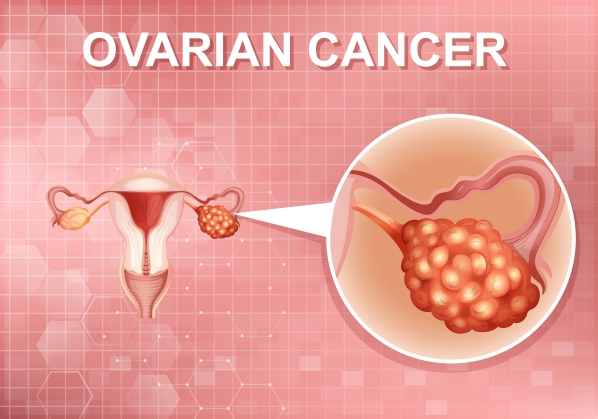What is Endometrial cancer?
The uterus is a muscular organ found in the pelvis of women, between the bladder and the rectum. It is the organ in which a baby develops during pregnancy. The inside of the uterus is lined with a layer called the endometrium. This is the layer that becomes thick and renews itself each month during the process called menstruation. Endometrial cancer is when cancer arises in your endometrium.
It is the most common female genital cancer in developed countries. It has been estimated in the United States that 2.8% of women will at some point in their life be diagnosed with the disease. Fortunately, endometrial cancer is usually detected early as it manifests as abnormal vaginal bleedings that cannot be missed out.
Treatment of endometrial cancer usually involves removing the uterus. However, treatment choice will depend on the extent of the condition as well as other factors.
Causes and risk factors of endometrial cancer
There are a number of factors that contribute or put you more at risk of having endometrial cancer. These include:
- Obesity: Obesity causes an increase in secretion of a hormone called Estrogen. Excessive or unopposed secretion of this hormone contribute in the development of endometrial cancer.
- Hormonal therapy: Tamoxifen is a drug which is used as hormonal therapy in people with breast cancer. Studies have shown that taking this medication increases your likelihood of having the disease later in life.
- Certain medical conditions: If you have other diseases such as breast, colon and ovarian cancers, you are also at increased risk of having endometrial cancer.
- Family history: If you have close relatives with endometrial cancer, you are also more prone to have the disease.
- Polycystic ovarian syndrome: This is a disease characterized by absence of ovulation. Hence, hormonal levels are disturbed, increasing your risk of having endometrial cancer.
- Never been pregnant: You are more likely to have endometrial cancer if you have never been pregnant compared to women who have previously been pregnant.
- Increasing age: Your risk of having endometrial cancer increases with increasing age.

Signs and symptoms of endometrial cancer
Around 75% of women with endometrial cancer are postmenopausal, meaning that they stopped having their menses. Therefore, in endometrial cancer, the most common manifestation is bleeding after menopause.
In women who are still having their menses, endometrial cancer can manifest as abnormal bleeding in between their periods.
In some cases, pain in the pelvis can also be present.

Making a diagnosis
In order to make the diagnosis, your doctor will begin by asking you questions about your symptoms and general health as well as a detailed gynaecological history. He/she will then proceed with a physical examination. This may involve palpating your abdomen and pelvis and having a look and feel inside your vagina to look for any abnormalities on your cervix.

Other tests may be required to help in the diagnosis, including:
- Vaginal ultrasound: In this procedure, a probe is inserted into your vagina and sound waves are emitted. The probe is connected to a screen which projects the image formed by the sound waves. This allows visualization of the uterus and its lining.
- Hysteroscopy: In this procedure, a special instrument called the hysteroscope is inserted through your vagina and cervix into your uterus. It is a thin tube with a light source on its end that allows visualization of the uterus lining.
- Endometrial biopsy: In this procedure, a sample of your endometrium is taken using a special device, and is sent to the laboratory for examination. This can be done in the doctor’s office and does not require anaesthesia.
- Dilatation and curettage: In some cases, the amount of tissue obtained during the biopsy is inadequate for proper analysis. Thus, a dilatation and curettage is required. This involves dilating your cervix to gain access to your uterus and using a special instrument to scrape the endometrium. The sample is then sent for analysis.
Once the diagnosis of endometrial cancer is made, you will be referred to a specialist for further evaluation and initiation of treatment. Other tests may be performed in order to stage the cancer as the treatment and prognosis depends on this factor. These tests include chest X-ray, computerized tomography (CT) scan, positron emission tomography (PET) scan and blood tests.

Treatment of endometrial cancer
The treatment of endometrial cancer depends on the staging of the disease. After a good evaluation, your doctor will be able to decide what treatment option suits you best. Treatment options include the following:
- Surgery: The main treatment option in endometrial cancer is the removal of the uterus, known as hysterectomy, as well as removing the fallopian tubes and ovaries. The latter is known as salpingo-oophrectomy. The downside of this treatment modality is that following removal of your uterus, you will never be able to fall pregnant. Removal of your ovaries will cause premature menopause if you were still menstruating.
- Radiation therapy: In this procedure, energy beams are used to destroy cancer cells. This can also be used following surgery to prevent the recurrence of the disease. Furthermore, the use of radiation therapy before surgery may help to shrink the cancer making it easier to remove.
- Chemotherapy: Chemotherapy involves using medications to kill cancer cells. It can be administered through your veins or taken as a pill. Similar to radiation therapy, chemotherapy can also be used following surgery to prevent recurrence.
- Hormonal therapy: Some cancer cells rely on the presence of hormones to grow and worsen. Hormonal therapies help by lowering the levels of these hormones so that cancer cells die.
Complications of Endometrial cancer

Anemia can occur in women with endometrial cancer resulting from blood loss. Signs and symptoms of anemia may include fatigue, cold and pale hands or feet, irregular heartbeats, headaches, difficulty in breathing and dizziness.
Prevention of endometrial cancer
There is no specific way to prevent endometrial cancer. However, general guidelines can be followed to decrease your risk of having the disease, including:
- Losing weight if you are overweight or obese
- Regular physical activity
- Discussing about hormonal therapies with your doctor
- Eat healthy
Prognosis
The course of endometrial cancer depends mostly on the staging of the disease. The type of cancer, which is determined by laboratory examination of the endometrium, also influences how severe the condition is. It is also determined by the extent to which the cancer has involved the wall of the uterus. If the cancer has already spread at the time of diagnosis, the prognosis is poorer.

Source:
Creasman, W., 2018. Endometrial Carcinoma.
Berek, J., 2020. Endometrial carcinoma: Clinical features, diagnosis, prognosis, and screening.





